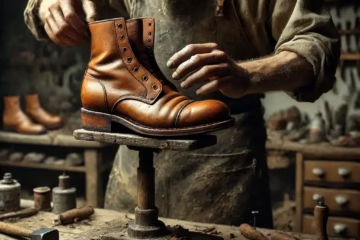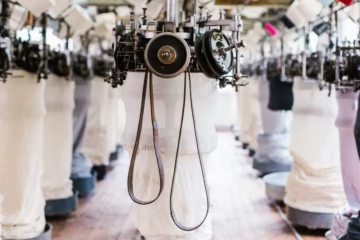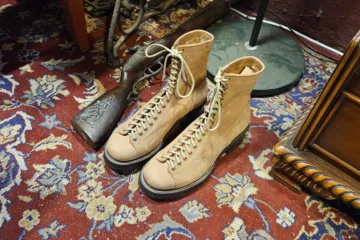What is Suede leather?
Published by Tom on
Essentially, the suede leather is the innermost part of leather that is soft and napped. Many of you will know that suede is a type of leather, but suede is very different compared to regular smooth leather that everyone knows because it’s napped. Suede is a popular leather type that is used in various areas. Suede is used for many products such as shoes you wear, bags you hold over your shoulders, and coats and jackets you own for colder climates.
Despite what Elvis may have made us think, all suede leather doesn’t come in blue. However, it is an elegant and refreshing item for its quality, appearance, and feel. Go ahead and listen to Elvis Presley’s song while reading this article and don’t step on my suede shoes.
Where does Suede come from?
The usual skin of a mammal has three layers, epidermis, dermis and hypodermis. The epidermis is the hard outside layer of the skin that protects. The dermis is the middle part that is softer and finally, the hypodermis is the skin that connects flesh with skin. Suede leather is usually made by stripping the innermost part, hypodermis from the rest of the skin. While epidermis has a smooth texture, hypodermis has a rough texture. Usually, suede originates from sheep, but it can also come from deers, goats and calves
How is suede made?
Suede leather is a split leather with top-grain sanded down or simply leather turned upside down. Suede leather that is made by sanding the split leather is the normal type of suede that we see on shoes and bags. It is less tough compared to suede that is just upside down, which has a similar toughness as full-grain leather.
Sometimes people get confused suede with nubuck. While suede is virtually leather that is inside out, nubuck leather is normal grain leather sanded down to give a napped look.
What does Suede look like?

Suede leather has both an extravagant vibe and an enhancing appearance. The suede “side” of the leather looks like thickly pressed short hairs. At the point when the suede leather is appropriately brushed, it has a steady shading. If it’s ruffled up, it might sometimes show up less thick just as it is darker.
Suede leather is dyed in many different colours – which takes us back to Elvis. While suede’s characteristic colour is the “tanned” colour of most cowhides, you can frequently observe quality suede leather in a wide variety.
Where is Suede used?
Since suede leather is flexible and thin, it’s extraordinarily significant for different attires and areas where a thicker leather would not be suitable. Suede leather is typically used in bags, shoes, upholstery, drapes, gloves, and other different adornments. It makes an incredible internal lining for other leather items, too – returning to where it all began as an inside layer.
Talking about gloves, we should specify how the name emerged. The material was utilized to make ladies’ gloves that originated from Sweden – “gants de Suede.” When they got famous in high society, the name stuck.
Faux suede leather also exists, or also known as “suedette”. Although they are not quite the same as genuine suede leather, a lot of people cannot tell the difference. This faux material is brushed to give it a nap like softened cowhide.
Advantages and Disadvantages
Advantages
Suede leather is very soft and looks great, therefore many consumers prefer suede to leather.
Since suede is flexible, it can be used in areas where normal stiff leather can’t be used. Also suede has decent breathability to support people’s tired feet, but also it can keep the wearer warm during the cold winter.
Disadvantages
Perhaps the most significant advantage of suede leather is that it’s not as strong as other leather types. Additionally, the nap can wind up catching soil, oil, and moisture, which make softened the cowhide, eventually recolouring and causing damage. Proper care can help mitigate this, yet it merits close monitoring.
Reviews of Suede Shoes: Sanders Olly, Tricker’s Adam


